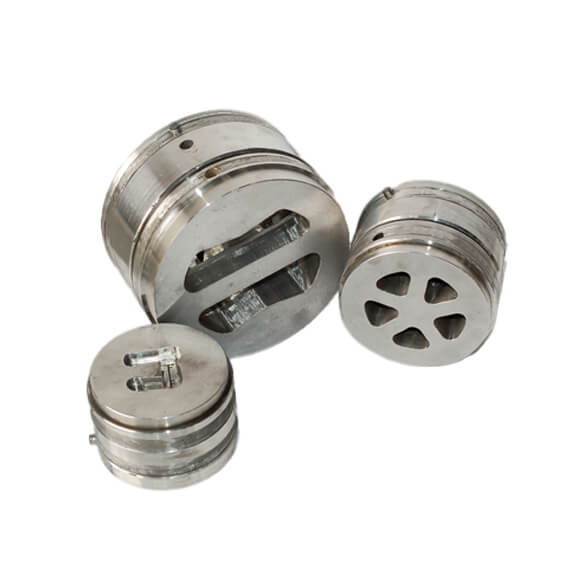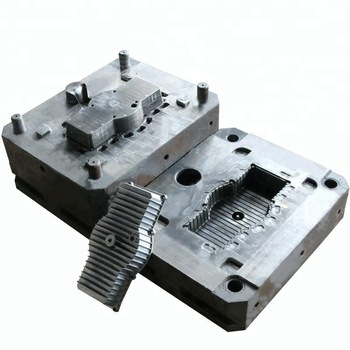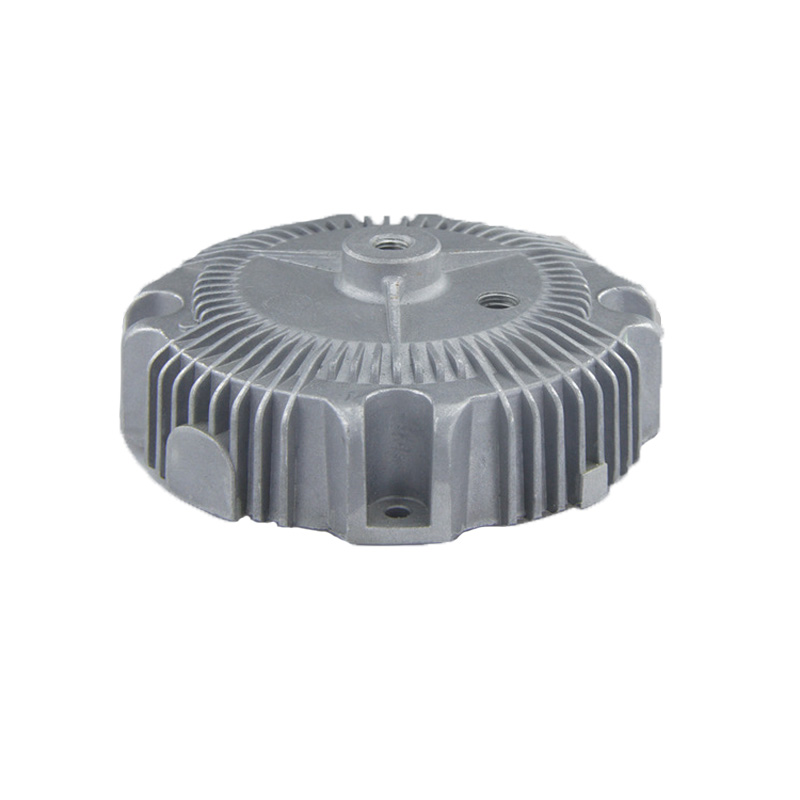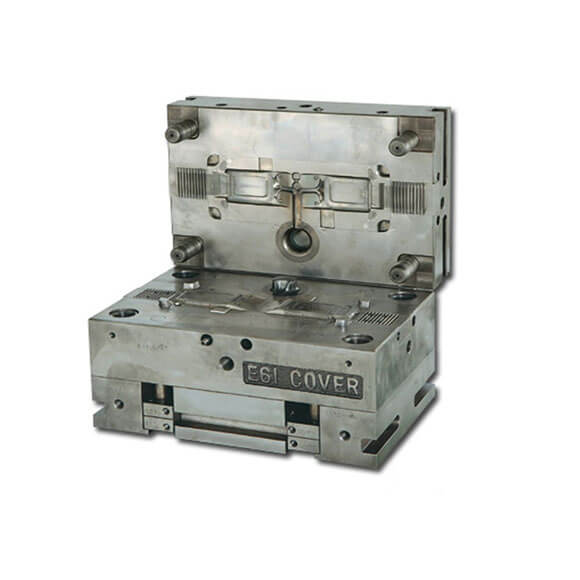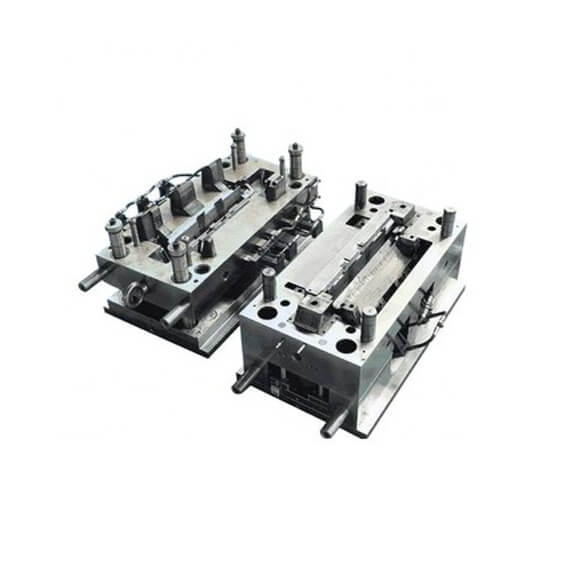Vous recherchez un fournisseur d' Moule de moulage sous pression? Avec des centaines de machines CNC, notre capacité interne inégalée garantit que vos pièces sont expédiées à temps, à chaque fois. Chez Katio, nos installations d'usinage CNC certifiées ISO 9001 sont conçues à la fois pour le prototypage rapide et la production à faible volume de composants finaux.
Die-casting mold is a tool for casting metal parts, a tool that completes the die-casting process on a special die-casting die forging machine. The basic process of die casting is: the metal liquid is firstly filled into the cavity of the mold at a low or high speed. The loose defect also makes the internal structure of the blank reach the forged broken grains. The comprehensive mechanical properties of the blank have been significantly improved.
New technologies for surface treatment of die-casting molds are divided into three categories:
(1) Improved technology of traditional heat treatment process;
(2) Surface modification technologies, including surface thermal diffusion treatment, surface phase transformation strengthening, electric spark strengthening technology, etc .;
(3) Coating technology, chemical plating, etc.
Les moules de moulage sous pression constituent une grande catégorie de moules. Avec le développement rapide de l'industrie mondiale de l'automobile et de la moto, l'industrie du moulage sous pression a inauguré une nouvelle période de développement. Dans le même temps, des exigences plus élevées ont été placées sur les propriétés mécaniques complètes et la durée de vie des moules de moulage sous pression. Luo Baihui, secrétaire général de l'International Mold Association, estime que pour répondre à la demande croissante de performances, il est encore difficile de répondre uniquement à l'application de nouveaux matériaux de moulage. Diverses technologies de traitement de surface doivent être appliquées au traitement de surface des moules de moulage sous pression pour obtenir une efficacité élevée des moules de moulage sous pression, une haute précision et des exigences de longue durée. Dans divers moules, les conditions de travail des moules de moulage sous pression sont relativement difficiles. Le moulage sous pression consiste à faire remplir la cavité du moule par le métal fondu sous haute pression et à grande vitesse et moulé sous pression. Il entre en contact à plusieurs reprises avec le métal chaud pendant le travail. Par conséquent, le moule de moulage sous pression doit avoir une résistance à la fatigue thermique, une conductivité thermique, une résistance à l'usure et une résistance à la corrosion élevées. , Résistance aux chocs, dureté rouge, bonnes propriétés de démoulage, etc. Par conséquent, la technologie de traitement de surface du moule de moulage sous pression doit être élevée.
1.Improved technology of traditional heat treatment process
The traditional heat treatment process for die-casting molds is quenching-tempering. Later, surface treatment technology was developed. Due to the variety of materials that can be used as die-casting molds, the same surface treatment technology and process can produce different effects on different materials. Schoff proposes the substrate pretreatment technology for the mold substrate and surface treatment technology. Based on the traditional process, it proposes suitable processing technology for different mold materials, so as to improve mold performance and mold life. Another development direction of the improvement of heat treatment technology is to combine the traditional heat treatment process with the advanced surface treatment process to improve the service life of the die casting mold. For example, the chemical heat treatment method of carbonitriding, combined with conventional quenching and tempering NQN (that is, carbonitriding-quenching-carbonitriding composite strengthening, not only obtains higher surface hardness, but also effectively hardens the layer. Increasing depth, reasonable gradient distribution of hardness of the infiltrated layer, improved tempering stability and corrosion resistance, so that the die casting mold can obtain good core performance while greatly improving surface quality and performance.
2. Surface modification technology
Surface thermal diffusion technology
This type includes carburizing, nitriding, boronizing and carbonitriding, sulfur carbonitriding, and so on.
Carburizing and carbonitriding
The carburizing process is used in cold, hot work and plastic mold surface strengthening to improve mold life. For example, 3Cr2W8V steel die-casting mold is first carburized, then quenched at 1140 ~ 1150 ℃, tempered twice at 550 ℃, the surface hardness can reach HRC56 ~ 61, which can increase the die life of die-casting non-ferrous metals and its alloys by 1.8 ~ 3.0 . When carburizing, the main process methods include solid powder carburizing, gas carburizing, and vacuum carburizing, ion carburizing, and carbonitriding formed by adding nitrogen in a carburizing atmosphere. Among them, vacuum carburizing and ion carburizing are technologies developed in the past 20 years. This technology has the characteristics of fast carburizing speed, uniform carburizing layer, smooth carbon concentration gradient, and small deformation of the workpiece. It will be on the mold surface, especially precision molds. Play an increasingly important role in surface treatment.
Nitriding and related low temperature thermal diffusion technology
This type includes nitriding, ion nitriding, carbonitriding, oxygen-nitriding, sulfur-nitriding, and sulfur-carbon-nitriding, oxygen-nitrogen-sulfur ternary infiltration and other methods. These methods have simple and convenient treatment process, strong adaptability, low infiltration temperature, generally 480 ~ 600 ℃, small deformation of the workpiece, especially suitable for surface strengthening of precision molds, and high hardness and good wear resistance of nitrided layer. Anti-stick performance.
3Cr2W8V steel die casting mold, after quenching and tempering, 520 ~ 540 ℃ nitriding, the service life is 2 to 3 times longer than the non-nitriding mold. In the United States, many die-casting molds made of H13 steel must be nitrided, and nitriding is used instead of tempering. The surface hardness is as high as HRC65 ~ 70, and the hardness of the core of the mold is low and the toughness is good. Mechanical properties. Nitriding process is a commonly used process for die-casting mold surface treatment. However, when a thin and brittle white bright layer appears on the nitrided layer, it cannot resist the effect of alternating thermal stress, and it is easy to generate microcracks and reduce thermal fatigue resistance. Therefore, in the nitriding process, the process must be strictly controlled to avoid the generation of a brittle layer. Foreign countries have proposed the use of secondary and multiple nitriding processes. The repeated nitriding method can decompose the bright white nitride layer that is easy to produce micro-cracks during service, increase the thickness of the nitriding layer, and at the same time, make the mold surface have a thick residual stress layer, which can significantly improve the life of the mold. In addition, there are methods such as salt bath carbonitriding and salt bath carbonitriding. These processes are widely used abroad and are rare in China. For example, the TFI + ABI process is immersed in an alkaline oxidizing salt bath after nitrocarburizing in a salt bath. The surface of the workpiece is oxidized and appears black, and its wear resistance, corrosion resistance and heat resistance have been improved. The life of the aluminum alloy die-casting mold processed by this method is increased by hundreds of hours. Another example is the oxynit process, which is nitridized after carbonitriding developed by France, and has more characteristics when applied to non-ferrous metal die-casting molds.

